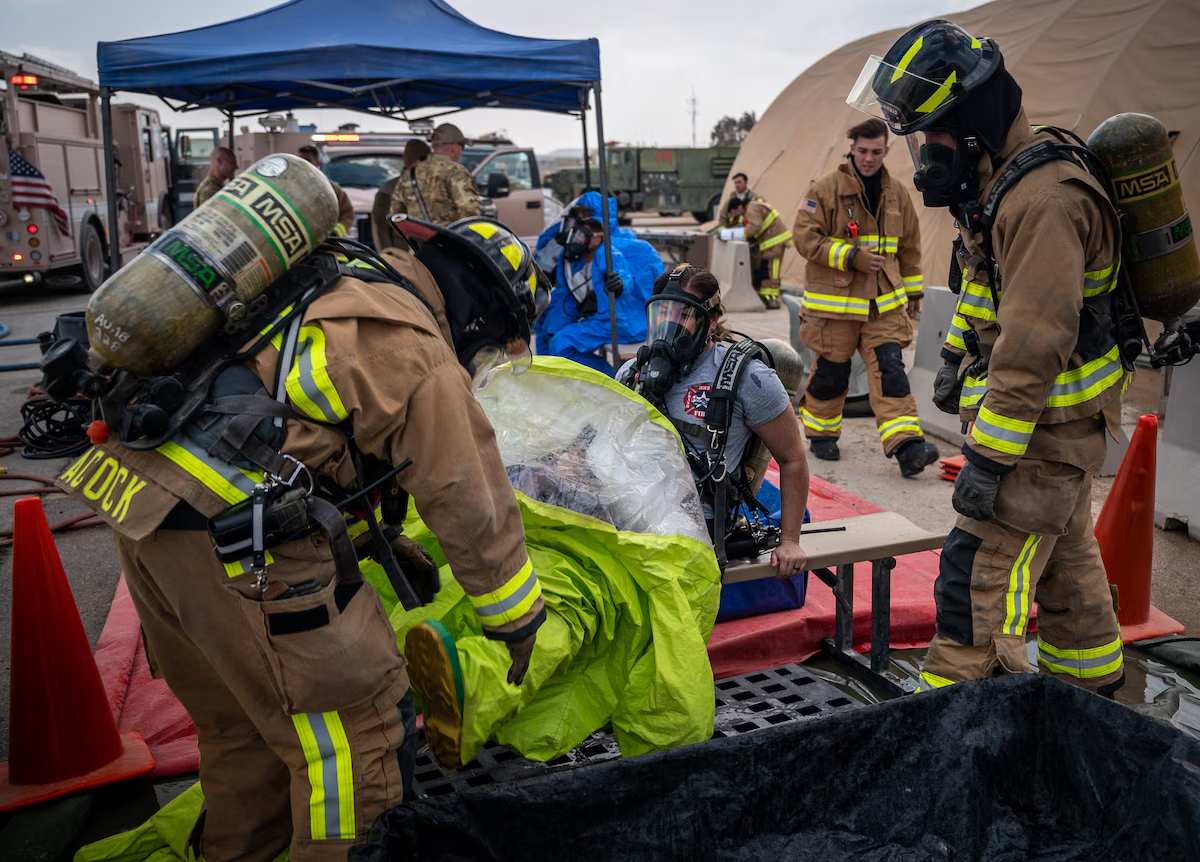
Not all chemical suits protect against all chemicals—even if they’re the same Type or EN rating.
That’s because every chemical behaves differently. Some eat through fabric in minutes. Others slowly permeate through seams.
So before you buy that "Type 3 suit" for acid handling—make sure it’s actually compatible with your chemical.
Here’s how to choose a chemical protective suit that truly works—by understanding chemical compatibility.
Why Compatibility Matters More Than You Think
Let’s say you buy a Type 3 Tychem® 2000 suit for sulfuric acid.
Sounds right?
🔴 Wrong.
Tychem® 2000 may be rated Type 3, but sulfuric acid at high concentration will eat through it in under 10 minutes.
✅ The correct process is:
Know your chemical → Check the compatibility chart → Match suit material to exposure level
Step-by-Step: How to Match Suit to Chemical
1. Identify the Chemical
Gather full chemical data:
- Exact chemical name (not just “acid” or “solvent”)
- Concentration (e.g. 70% sulfuric vs. 30%)
- Physical state (liquid, vapor, mist)
- Temperature during use
- Exposure time (splash or sustained?)
📄 Get this from your Safety Data Sheet (SDS) or chemical label.
2. Use a Compatibility Guide
Most major PPE brands publish Chemical Compatibility Charts.
Examples:
- DuPont™ Tychem® Chemical Resistance Guide
- Lakeland® ChemMax Compatibility List
- Ansell® Barrier Permeation Data
- 3M® Protective Apparel Selector Tool
These charts rate materials using terms like:
| Rating Code | Meaning |
|---|---|
| A | Excellent: >8 hrs breakthrough |
| B | Good: 1–4 hrs |
| C | Limited: 10–60 mins |
| D/X | Not recommended / Incompatible |
✅ You’ll often see results like:
Tychem® 4000 – Nitric Acid (70%) – Rating: A
3. Match Material to Chemical
Different materials excel in different situations:
| Material | Best For |
|---|---|
| Tychem® 2000 | Mild acids, light solvents (short exposure) |
| Tychem® 6000 | Concentrated acids, toxic vapors |
| PVC | Sulfuric acid, caustic soda, industrial cleaners |
| PTFE | Hydrofluoric acid, ketones, complex organics |
| Butyl Rubber | Gas protection: ammonia, chlorine, esters |
🧪 A suit may resist one chemical but fail against another—even at the same protection level.
Common Compatibility Pitfalls
| Mistake | Why It’s Dangerous |
|---|---|
| Assuming Type 3 = universal acid suit | It’s about fabric + seam + chemical resistance—not just Type |
| Using same suit for different chemicals | Some solvents dissolve materials not affected by acids |
| Ignoring temperature effects | Higher temps = faster permeation, even for good-rated suits |
| Not testing for mixtures | Combo chemicals (e.g. acid + solvent) can degrade faster |
| Blindly trusting “splash-resistant” claims | These don’t tell you which chemicals are truly blocked |
What About Mixtures or Unknown Substances?
- Always test with small swatches or ask for custom test data
- In unknown or changing environments, opt for:
- Tychem® 6000 or TK
- PTFE multi-layer suits
- Full gas-tight (Type 1) solutions with SCBA
✅ Never guess when chemicals are unknown. Go higher protection or don’t go in at all.
Don’t Forget: Compatibility ≠ Comfort
Some suits may offer great chemical protection but cause:
- Heat stress
- Limited mobility
- Fogging in visors
✅ Consider pairing with:
- Cooling vests
- Ventilation fans or filters
- Anti-fog coatings / hooded respirators
What to Ask Your Supplier
- Do you have a compatibility chart for this suit?
- Has this material been tested against my chemical at my concentration?
- What is the breakthrough time and degradation result?
- Can you provide test data or customer usage case?
- Are there material alternatives that are more cost-effective?
At workwearsolutions, we offer chemical matching support before you buy—so you don’t have to rely on guesswork.
Conclusion
A chemical suit is only as good as its compatibility with the chemical you’re using.
As a responsible buyer:
- Don’t stop at the CE label—check material compatibility
- Get the chemical name, concentration, exposure time
- Always ask for technical data or compatibility charts
Need help evaluating your suit’s compatibility with sulfuric acid, methanol, chlorine, or custom mixtures?
Let’s talk science before safety becomes a liability.
📩 Contact: [email protected]
🌐 Visit: www.workwearsolutions.net
Zion Zhang
Recent Posts
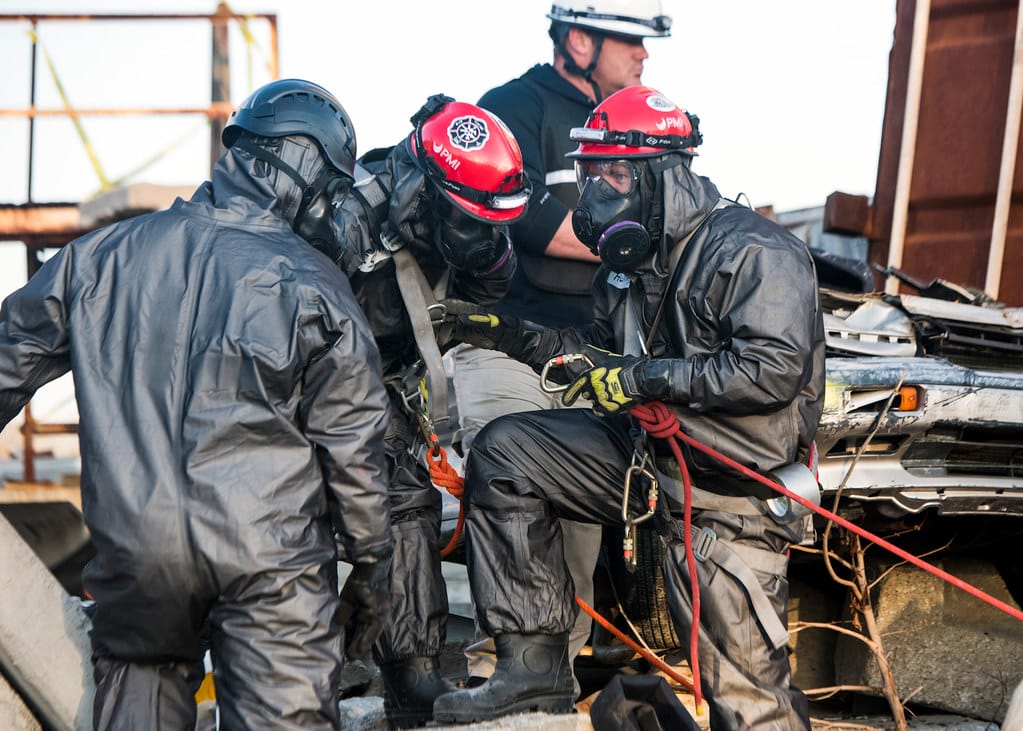 Multi-Hazard PPE: Balancing Chemical, Flame, and Arc Flash Protection in One Suit2025年7月16日Multi-Hazard PPE: Balancing Chemical, Flame, and Arc Flash […]
Multi-Hazard PPE: Balancing Chemical, Flame, and Arc Flash Protection in One Suit2025年7月16日Multi-Hazard PPE: Balancing Chemical, Flame, and Arc Flash […]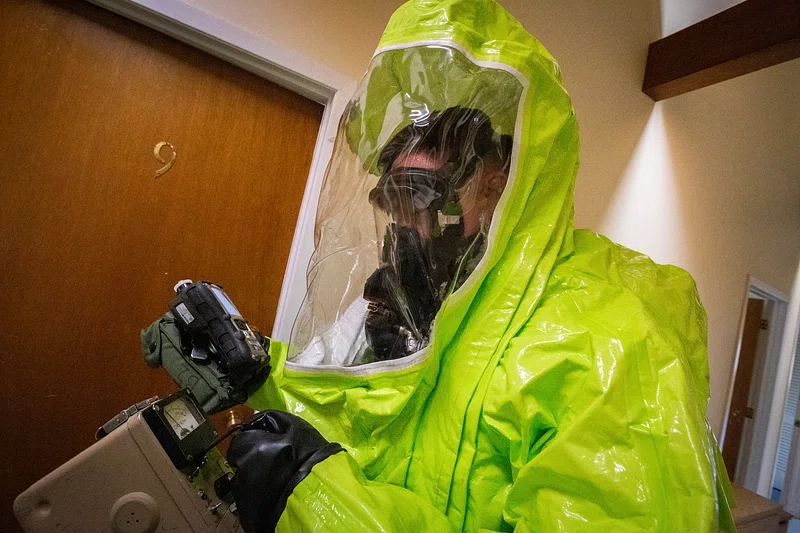 Industry Applications: Chemical PPE for Pharma, AgriChem, Oil & Gas, Paints, and Labs2025年7月16日Industry Applications: Chemical PPE for Pharma, AgriChem, […]
Industry Applications: Chemical PPE for Pharma, AgriChem, Oil & Gas, Paints, and Labs2025年7月16日Industry Applications: Chemical PPE for Pharma, AgriChem, […]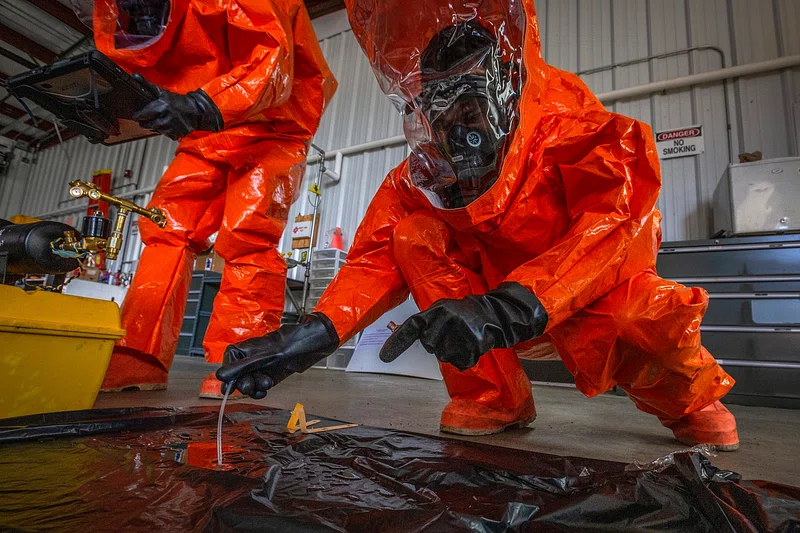 Storage, Inspection, and Replacement of Chemical Protective Clothing2025年7月16日Storage, Inspection, and Replacement of Chemical Protective […]
Storage, Inspection, and Replacement of Chemical Protective Clothing2025年7月16日Storage, Inspection, and Replacement of Chemical Protective […]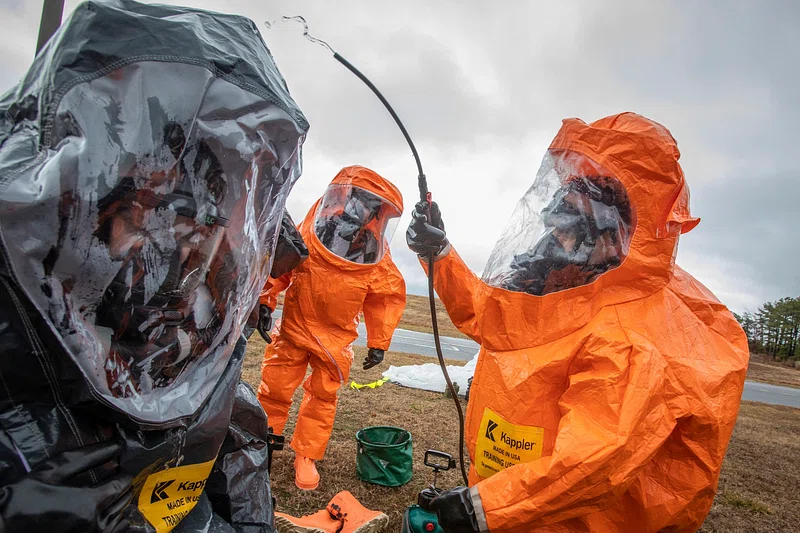 Donning and Doffing Chemical PPE: Step-by-Step for Maximum Safety2025年7月16日Donning and Doffing Chemical PPE: Step-by-Step for Maximum […]
Donning and Doffing Chemical PPE: Step-by-Step for Maximum Safety2025年7月16日Donning and Doffing Chemical PPE: Step-by-Step for Maximum […]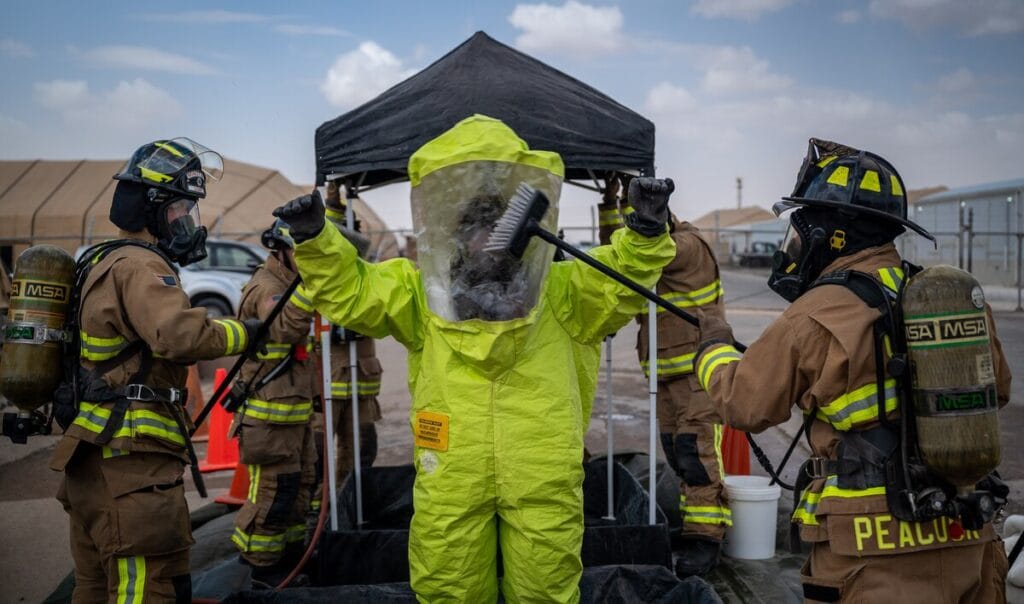 Common Materials in Chemical Suits: Tychem®, PVC, PE, PTFE, and Beyond2025年7月15日Chemical suits may look similar—but what they’re made of […]
Common Materials in Chemical Suits: Tychem®, PVC, PE, PTFE, and Beyond2025年7月15日Chemical suits may look similar—but what they’re made of […]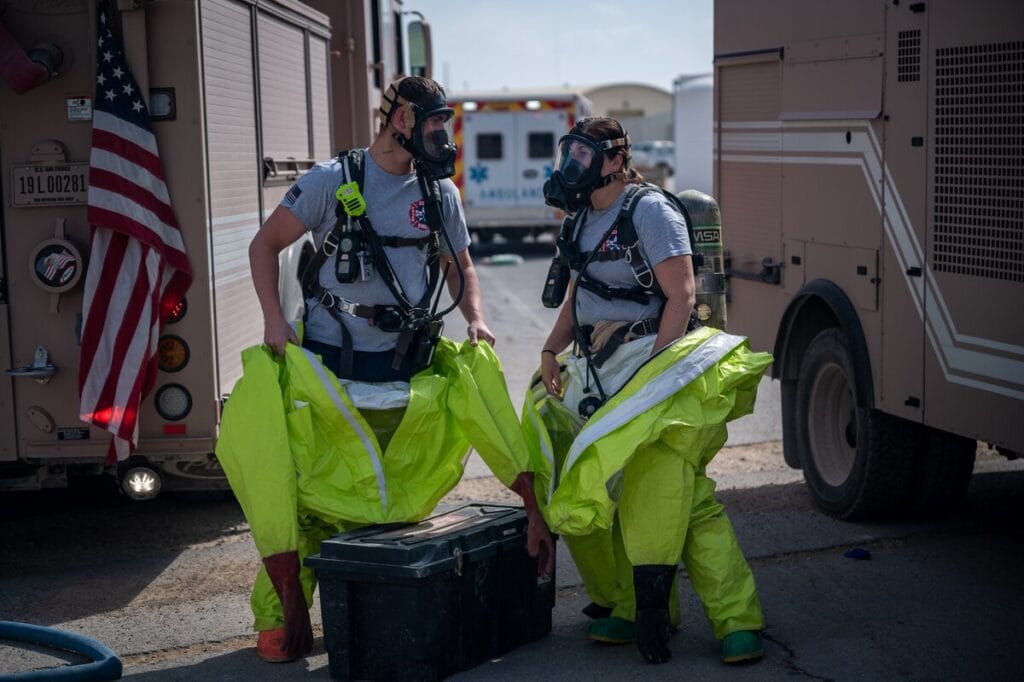 Disposable vs Reusable Chemical Suits: Which Should You Choose?2025年7月15日Choosing between disposable and reusable chemical suits […]
Disposable vs Reusable Chemical Suits: Which Should You Choose?2025年7月15日Choosing between disposable and reusable chemical suits […]
CONTACT US
- Feel free to contact us any time. We will get back to you as soon as we can!
- +86-17330061805
